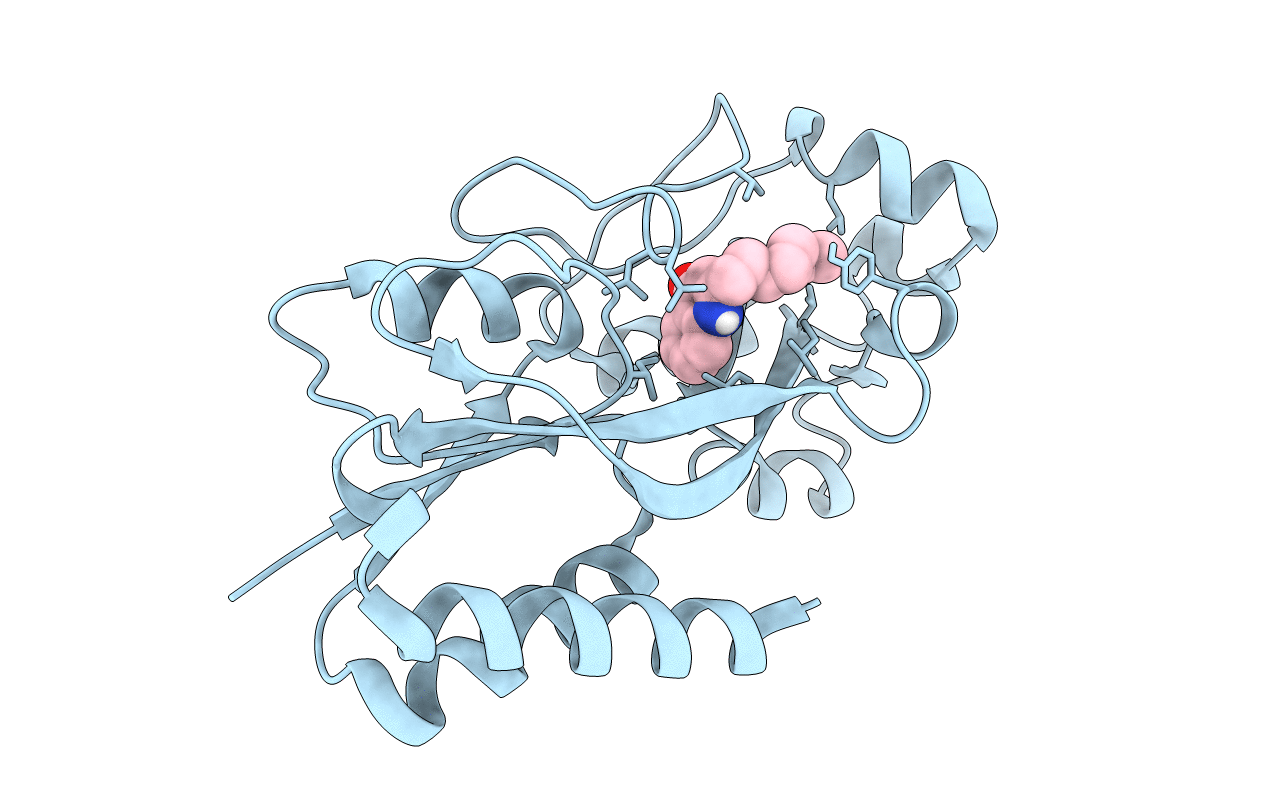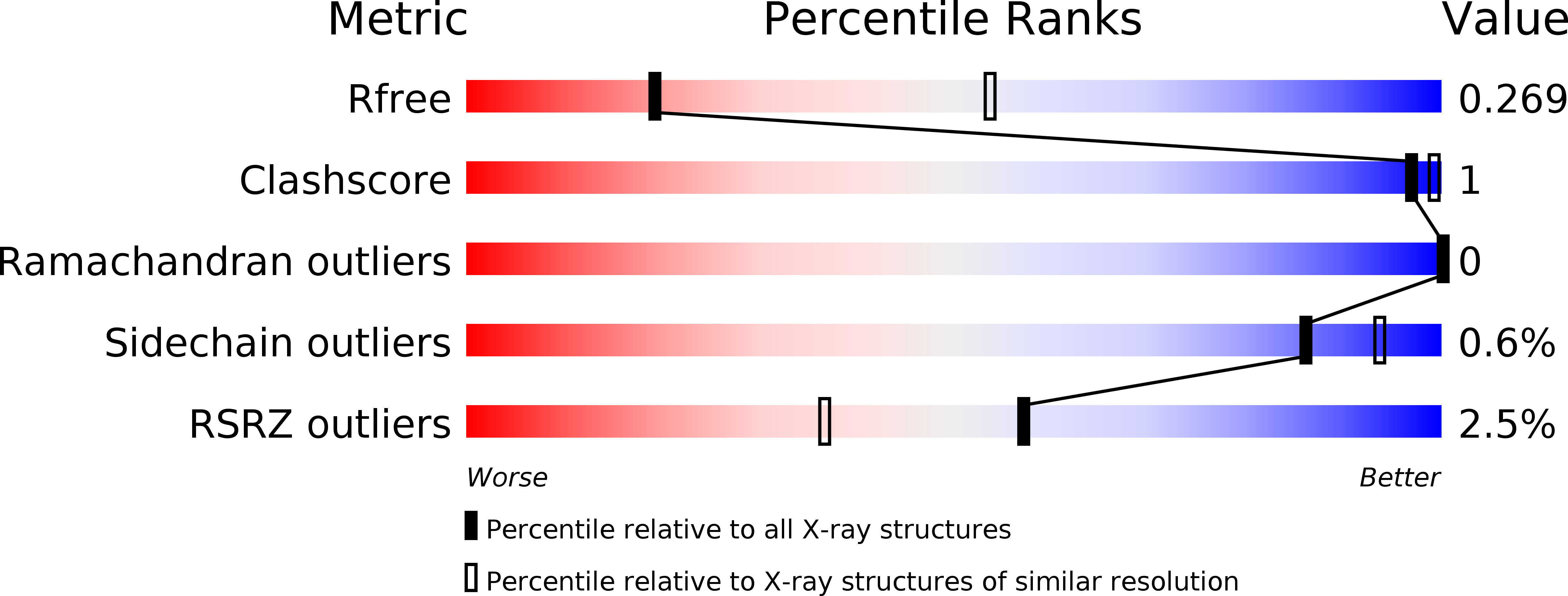
Deposition Date
2018-12-13
Release Date
2019-11-20
Last Version Date
2024-01-24
Entry Detail
PDB ID:
6Q7U
Keywords:
Title:
Crystal structure of PqsR (MvfR) ligand-binding domain in complex with HHQ
Biological Source:
Source Organism:
Pseudomonas aeruginosa PAO1 (Taxon ID: 208964)
Host Organism:
Method Details:
Experimental Method:
Resolution:
3.14 Å
R-Value Free:
0.27
R-Value Work:
0.23
R-Value Observed:
0.23
Space Group:
P 65 2 2


